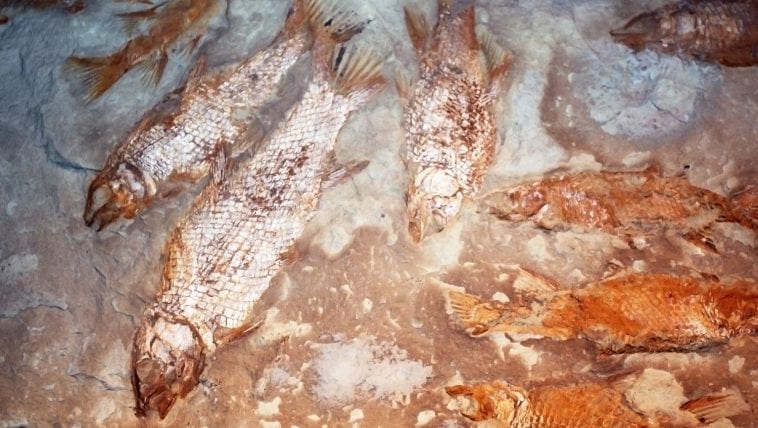[Originally published as Fish Fossils Form Fast]
Fossil fish are quite common in the fossil record. The story spun by evolutionists is that these fish died, sank to the bottom, and were slowly buried over time. However, there are a lot of flaws with this story and one of the less obvious involves coldwater fish. Unlike those in warmer water, coldwater fish actually do have a chance of sinking to the bottom instead of floating like many of us are used to. In theory, this could allow the evolutionist a path to fish fossils. But all is not as it seems.
It turns out that when fish sink, they don’t just sit there and wait to be fossilized; generally, they are quickly scavenged. It’s easy to imagine though that even if scavenging took place quickly, the skeleton would be left behind by most scavengers, giving ample opportunity for fossilization. But this does not happen. The bones contain valuable minerals and, in the fallen world we live in, nothing is wasted.
This is where a group of specialized pseudo-fungi called oomycetes step in.
Oomycetes
…are unique types of organisms that don’t quite fit into any typical classification scheme. I used the word “pseudo-fungi” above because they used to be classed as fungi, but have since been removed and no one is quite sure where to put them.
The particular genus of oomycetes that is relevant to this discussion is the genus Saprolegnia. All species of Saprolegnia are either saprophytes or parasites, meaning they obtain their nutrients either from dead things or from leeching them from living organisms. These microorganisms are commonly found on fish farms where there are ready sources of food.
It is possible for Saprolegnia to infect healthy fish, causing a condition termed Saprolegniasis. However, it is after death that these oomycetes are most voracious. Without the fish’s innate immune system to fight them anymore, the Saprolegnia go into a full-blown feeding frenzy. They begin to break the remains down, consuming everything from the scales to the bones. Nothing is wasted, nothing is left behind.
Now let us consider the evolutionary scenario once more.
A fish dies, sinks to the bottom and lies there for myriads of years while it is being fossilized before being discovered in modern times. Does this fit the evidence? Not too well.
Most of the time fish float when they die. Only under cooler water conditions do fish sink.
Further, once fish do sink to the bottom, they are met by ravenous predators and scavengers on the seafloor who are not too picky about where their food comes from.
The odds of avoiding the clean up crew are basically zero.
However, the biblical flood scenario makes good sense of the evidence. In the flood model, the vast majority of the fish fossils would have been buried alive, or just after death. This would prevent scavengers like the oomycetes from getting to them. Further, it would insulate them from oxygen, which breaks down anything it comes in contact with. Surrounded by minerals and permineralized water, and under immense pressure from the layers rapidly forming above them, the fossils could have been formed very quickly.
As usual, the weight of the evidence conflicts the evolutionary scenario while supporting the biblical narrative.
Despite the weight of the evidence firmly supporting the Bible, both in this case and many many others, I do not expect the evolutionists to be swayed by it. The creation/evolution issue is not, and never has been, a science issue. It has always been a worldview issue. Until the sinful worldview of the evolutionists’ changes, they will never accept any evidence the creationists present, even if it means contradicting observed reality.






